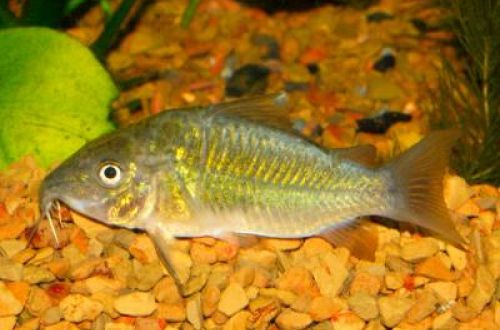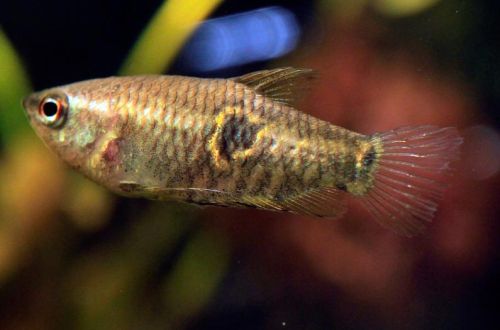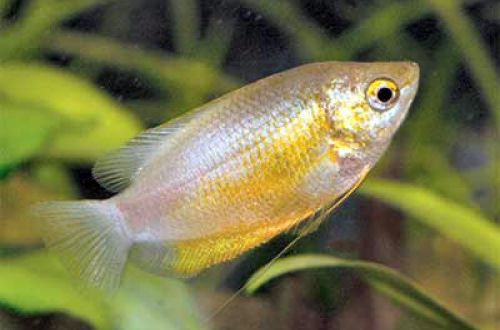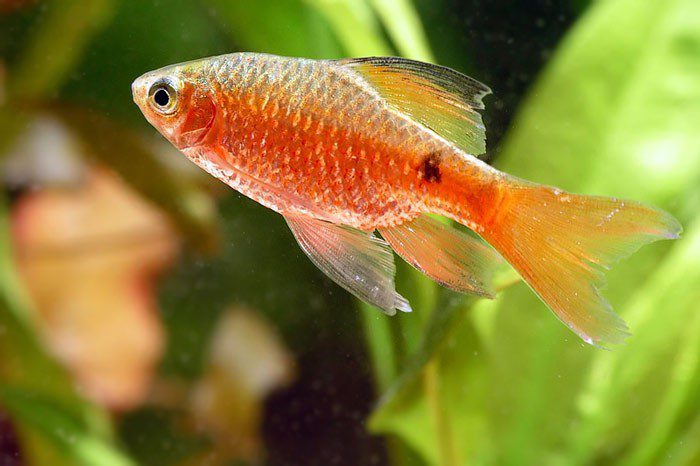
Red Barbus
The Red or Pink Barb, also known as the Fire Barb, scientific name Pethia conchonius, belongs to the Cyprinidae family. Their bright appearance will not leave you indifferent, and their high activity makes them an interesting object of observation, especially if they are kept in a large flock.

There are several varieties of the same species that differ in body color and fin size, but since they require the same conditions in keeping and breeding, in this article they are combined under the common common name Red or Fire barb.
Requirements and conditions:
- The volume of the aquarium – from 80 liters.
- Temperature – 18-23°C
- Value pH — 6.0–8.0
- Water hardness – soft to medium hard (5-19 dGH)
- Substrate type – sandy
- Lighting – moderate
- Brackish water – no
- Water movement – moderate
- Size – up to 10 cm.
- Food – any food
- Life expectancy – about 5 years
Habitat
The Red Barbus was first described in 1822 during a study of the fauna of European colonies located in Southeast Asia. Currently, populations of this species are common in northern India, Bangladesh, and also introduced and successfully adapted in Australia and New Zealand, in some regions of South America (Puerto Rico, Colombia).
Description
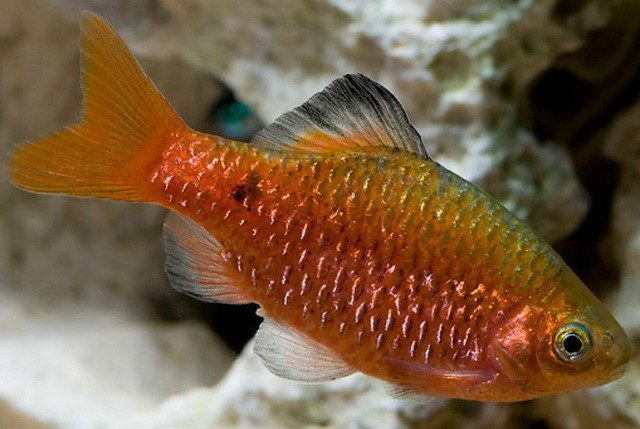
The fish has a large dense body with a forked caudal fin. On the back is a large dorsal fin. The color depends on the breeding variety and can vary from bright orange/red to pale pink. The only unchanging feature is a black spot next to the tail, as well as a dark edging of the fins, which becomes more intense during the spawning season.
Food
Fish are omnivores. It is allowed to feed both live (bloodworm, tubifex) and dry food. There is a wide variety of specialized food for barbs, including color enhancers. These types of feed contain all the necessary trace elements, so additional feeding with live food is not required.
Maintenance and care
High water quality and the presence of current are two important conditions for successful keeping, which are achieved by placing a productive filter and aerator in the aquarium. In the process of their work, they just create the necessary movement of water. Artificial current stimulates the coloration of males. A heater is not required, room temperature is sufficient as long as it is not below 20°C.
The fish are active, swim in all parts of the aquarium and can accidentally jump out of it during games, so a lid is a must. The design should use a sandy substrate and dense vegetation on the sides of the tank. A stained tree (specially prepared roots, branches and other snags) is suitable as additional shelters.
Social behavior
Active schooling fish, requires the joint maintenance of at least 6 individuals. Males spend a significant part of their time in sparring – swimming next to each other with raised fins, demonstrating their coloration.
Barbs pose a threat to fish with long fins, they instinctively try to bite them off, and slower species. As neighbors, no less active fish of a slightly larger size with short fins should be selected.
Breeding / breeding
The fish becomes sexually mature at a size of 6 cm. The male and two females are transplanted into a separate tank. After the ritual of courtship in the form of a kind of dance, they begin to spawn, one female lays at least 100 eggs. After spawning, parents are placed back in the common aquarium. The fry appear after 30 hours.
A separate tank should have a volume of at least 30 liters, a water depth of only 10-15 cm, the hydrochemical composition should correspond to the general aquarium, the temperature is slightly higher – 22-25 ° C. Coarse gravel so that the eggs fall between the particles, this will prevent them from being eaten. In the design, you can use both live and artificial plants. Of the equipment – an aerator and a heater, in this case it is necessary.
Diseases
The Red Barbus is distinguished by high endurance, therefore, when kept in optimal conditions, diseases do not occur. Read more about the symptoms and methods of treatment of diseases in the section “Diseases of aquarium fish”.



